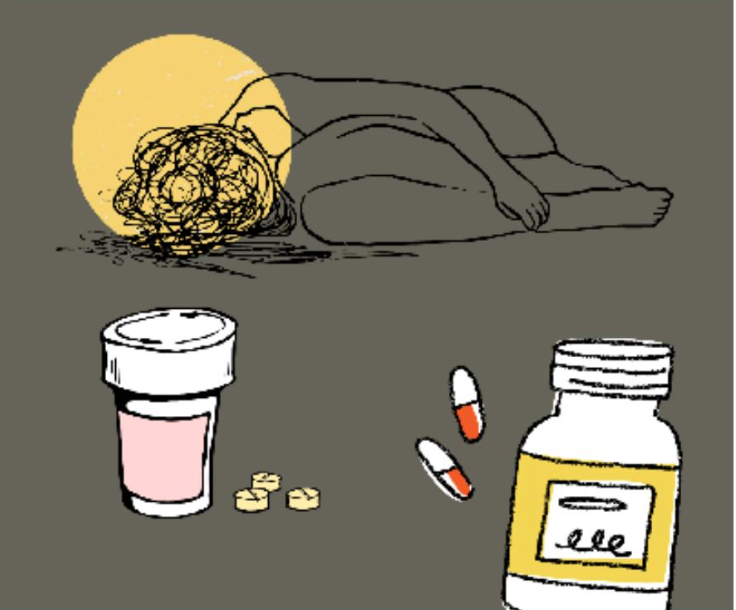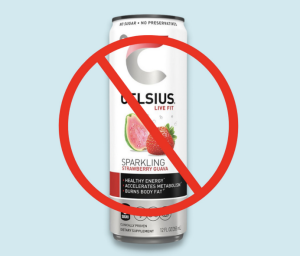Life beyond the haze
March 8, 2023
TRIGGER WARNING: This article includes conversations about different substances that college kids may or may not abuse.
When was the last time you used a substance?
Many students at GC have this conversation freely and frequently.
Whether you are in class, listening to someone talk about the Adderall they bought from someone to study for a test, at a bar listening to your friend brag about their fifth lemon-drop shot or at a party, watching attendees leave the bathroom rubbing the remnants of cocaine off their noses, drugs seem to be so normalized on a college campus.
The conversations associated with substance abuse present themselves as casual or cool after entering your freshman year of college. Many students make it a normal activity to try and alter their natural states using some sort of substance. It seems that students are so desensitized to different substances that even recreational or stereotypical drugs associated with college culture, such as marijuana or cocaine, seem to be old news. Have college kids become numb to the idea of numbing themselves?
Students at GC are familiar with terms like “T-Shirt Tuesday,” “Wine Wednesday” or even “Thirsty Thursday.” These are all times during the week where you can find the downtown bars filled to the brim with college students. While substances other than alcohol seem to be out of sight, take one trip to an afterparty, and you are likely to be met with some sort of drug use.
Speaking of drug abuse, what about the addiction to coffee or nicotine? It seems to me like many students will go an entire day running on a singular iced coffee and a couple hits from their vape.
The interesting fact is, if you were to ask any student about their weekly party schedule and the substance abuse that follows suit, students would not know how to respond or would be perplexed at why you thought it was abnormal. Many college students get to Saturday, normally nursing a hangover from nights prior, and still continue to drink because, well, it is a Saturday in “Milly Vegas.”
Many college students see the weekends or their regular party schedules to alleviate stress, which in turn leads to using some sort of substance. Some students use substances to alleviate anxieties or outside pressures, while some students see using substances as a norm in our twisted college culture that suggests you are an outsider if you do not join in. For others, the practice of using alcohol or other drugs has become a habitual act of bonding with their peers.
Because college years are so developmental, many of the habits formed during students’ time at university stick with them for life. The days of week-long benders do not age well when beginning a 9-5 as adult life sinks in. The overwhelming weight of “real world” stressors seem, in the opinions of some, to be numbed with the use of substances. The act of mixing these stimulates and depressors make college seem like a rollercoaster with a “work hard, play hard” mantra playing in the background.
Substance abuse is increasing.
Many students live under the impression that using substances can make the weight of an uncertain future bearable. Will we continue to ignore the blatant truths that college kids are, and have been for decades, looking for an escape, or will we sit back and allow substance abuse to continue skyrocketing?
According to Ashley Addiction Treatment, roughly 80% of U.S. college students abuse alcohol, and 4.9% use marijuana daily, whereas only 2.8% used daily 20 years earlier. As for other drugs, including benzodiazepines (e.g. Xanax), the proportions for student use have increased 450%.
Incredible drug use within students will continue to affect not only student’s academic performances, but also encourage risky and harmful behavior for their foreseeable futures. Students enrolled for longer periods could be looking at health decline, addiction and abuse, and relationship issues.
College culture as represented in movies and taught to us by upperclassmen has always involved the inevitable experimenting with different substances. However, the harsh reality of these experiments sinks in as substances become more and move available. As young adults, many of us are still navigating our paths to adulthood, making the habitual use of substances resemble a tightrope walk. How do we begin setting boundaries for resetting after a tough academic week or having fun with our friends and trying to numb or remove ourselves from outside stressors by using substances?
Young adults, or, more specifically, college students, are facing many stressors as we near the end of our college days. As for me, I am trying to navigate finding a job in a post-pandemic economy, navigate how our climate may survive the nearing future and decide how I am going to find a career that will help pay off the student loans I have racked up over the past four years. However, I know that there are ways of dealing with these stressors that are not going to risk my future and harm myself along the way.
I am by no means implying that having a casual drink with your friends or going downtown is unacceptable However there are boundaries that need to be drawn in the sand when partaking in substance use. Sometimes, you have to take care of yourself, even if that means sitting out a party or being the designated driver for the night.
College kids, including myself, are all trying to forge our own paths and decide what choices will help us become the best versions of ourselves. Maybe in learning yourself and learning your body, the three-day benders that have become your norm will seem less important. I think, as a society, it is time to take a step back and decide what it is that makes the idea of numbing reality so common. I think, in doing so, maybe we can save ourselves from self-destruction and combat this substance-abuse crisis.







